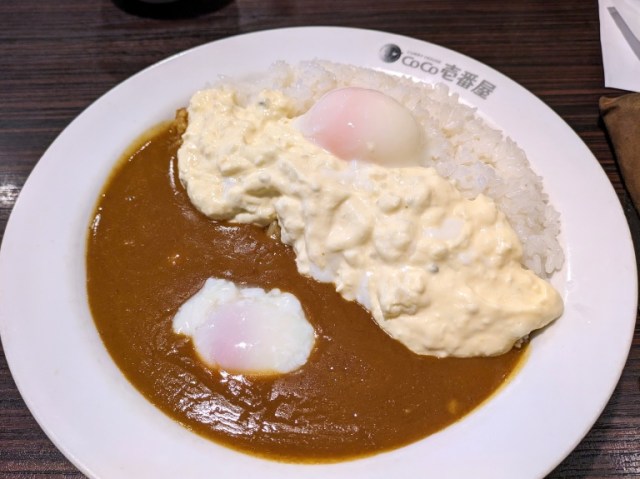
A taste test this strange can only be handled by Mr. Sato.
Japan has a lot of curry rice restaurant chains, but none are quite so beloved as CoCo Ichibanya, also known as CoCo Ichi.
Part of what makes CoCo Ichi so great is that they offer a huge variety of toppings you can add to your plate, like fried chicken, sausages, and tartar sauce.
Yep, tartar sauce. Just like in other countries, in Japan the mixture of mayo, onion, celery, parsley, and egg is most commonly associated with seafood, but it’s recently been added to the topping menu at CoCo Ichi. And just to be clear, tartar sauce isn’t something CoCo Ichi gives you as an extra when you order some sort of seafood for your curry. It’s an individual topping of its own, and is actually available in two different varieties, Creamy Tartar Sauce and Soft-boiled Egg Tartar Sauce.
▼ Creamy Tartar Sauce (クリーミータルタルソー) and Soft-boiled Egg Tartar Sauce (クリーミータルタルソース) on the CoCo Ichi menu touchscreen
To see if curry rice with tartar sauce is just crazy enough to work, we sent our fearless Japanese-language reporter Mr. Sato over to CoCo Ichi to try it out. He started his order with a plate of their standard Pork Curry for 591 yen (US$3.90), then tacked on two orders each of Creamy Tartar Sauce (52 yen per order) and Soft-boiled Egg Tartar Sauce (172 yen per order). Mr. Sato figured that if he was going to test this curry combination, he should let the special guest stars play a big role.
▼ Mr. Sato doesn’t do anything by halves. He does things by doubles/quadruples.
His double order of Creamy Tartar Sauce fit into a single dish…
…but maybe to keep the soft-boiled eggs intact, each Creamy Tartar Sauce order gets its own.
Regardless of whether or not you get the soft-boiled egg, the tartar sauce itself seems to be the same. Taking a test taste, Mr. Sato found it to be a very tasty specimen, with nice rich and tart notes. The sliced bits of hard-boiled egg also had a nice texture and hadn’t melted away.
Mr. Sato wasn’t sure if he was supposed to break up the soft-boiled egg yolks or not, what with tartar sauce on curry being an entirely new experience for him. In the end, he decided to keep the yolks intact.
Like most Japanese curry restaurants, CoCo Ichi serves its curry rice with the roux on one side of the plate, partially overlapping with the rice. In acknowledgment of this aesthetic tradition Mr. Sato poured his tartar sauce in such a way as to create an additional stripe, placing one soft-boiled egg on the tartar sauce and the other in the curry roux.
Starting with a spoonful of rice and tartar sauce, the flavor wasn’t bad at all. Though not a traditional Japanese condiment, mayonnaise is sometimes eaten together with rice (as in tuna mayo onigiri rice balls), and tartar sauce rice didn’t feel all that far off in terms of taste, so Mr. Sato had no complaints here.
Now it was time for the moment of truth, as he mixed tartar sauce and curry roux in the same spoonful.
Surprisingly, this wasn’t bad at all either. The sweetness of the egg and tart flavors of the pickled cucumber were still very noticeable, but now with the savory qualities of the curry backing them up.
However, adding tartar sauce also greatly took the edge off the spicy sensations of the curry. The resulting flavor is rich, but also mild.
That’s not an immediate deal-breaker, however. While curry rice falls into the “spicy food” category, Japanese curry tends to be milder than its counterparts in other countries’ cuisines, so much so that for most Japanese curry fans, it’s the flavor, not the heat, that they’re looking forward to when they order it. If you are in the mood for something with a bit of a kick, though, Mr. Sato recommends upping the spice level on your order, which is another way CoCo Ichi lets you customize your curry.
In the end, for as weird as the concept initially felt, Mr. Sato gives CoCo Ichi’s tartar sauce curry a thumbs up, and we’re guessing it’d be even better if you also added the restaurant’s shrimp or fried squid topping with it.
Photos ©SoraNews24
● Want to hear about SoraNews24’s latest articles as soon as they’re published? Follow us on Facebook and Twitter!